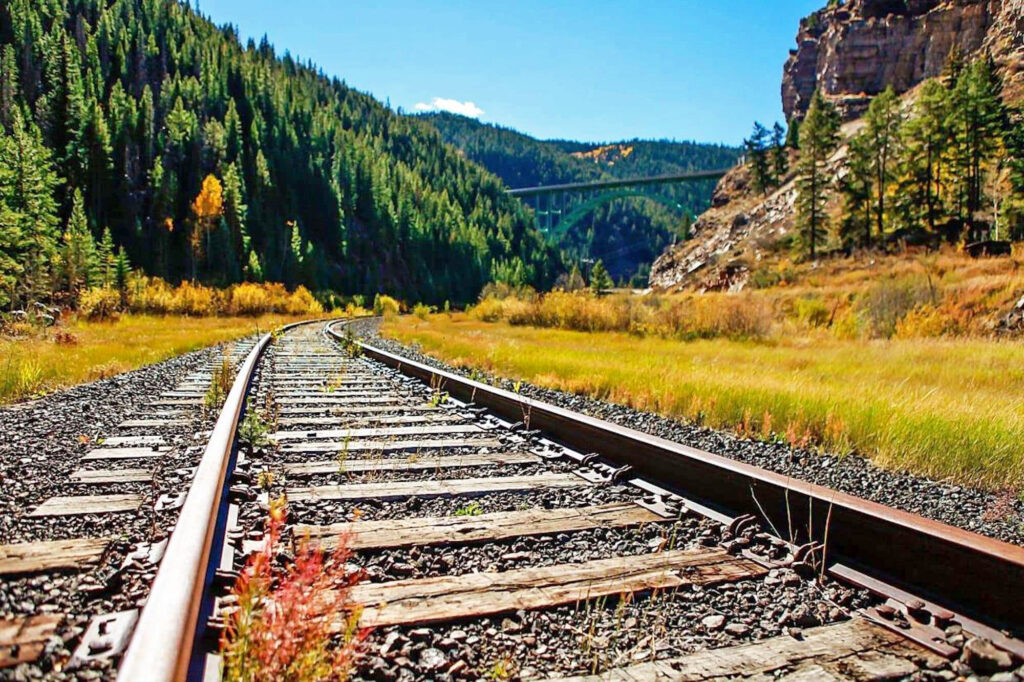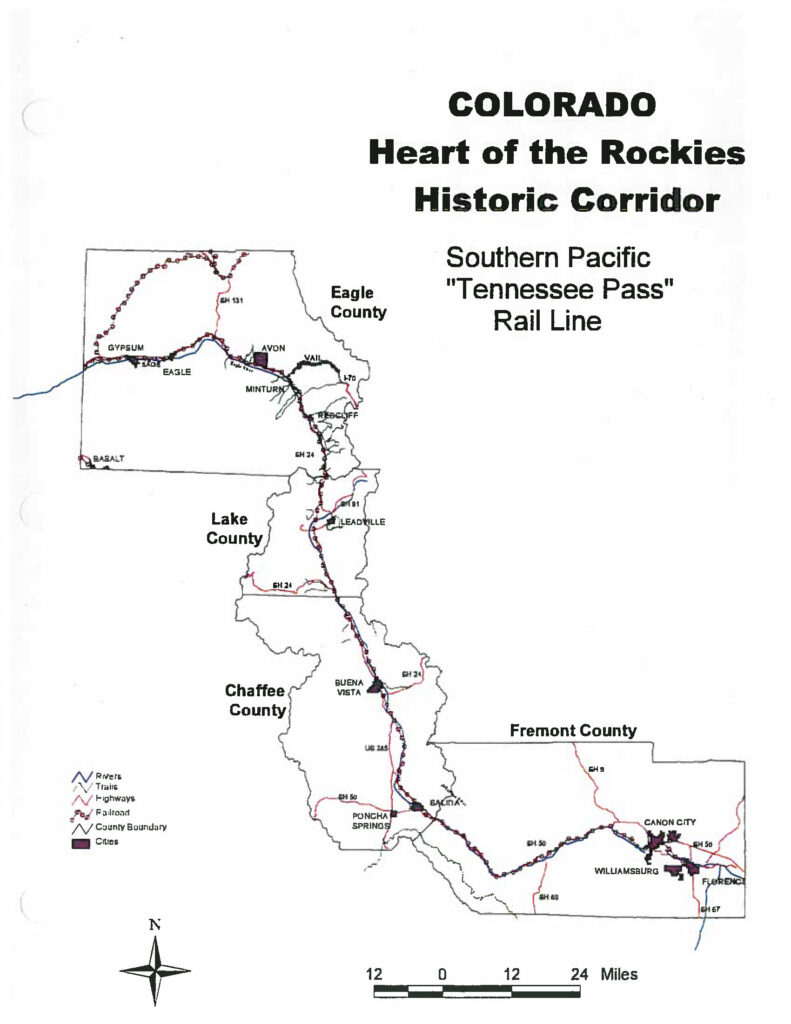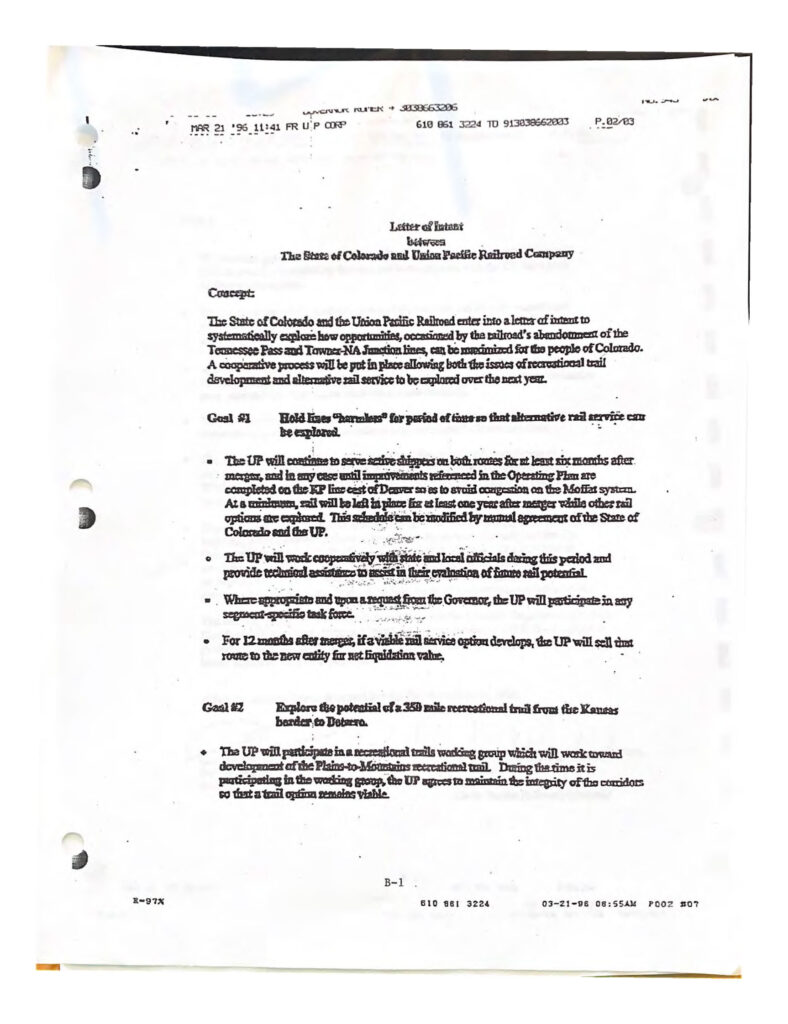Did you know that in 1996 the Tennessee Pass rail line was oh so close to turning into a 178 mile trail? Yes, you read that right and if you are like us, the opportunity is simply mind blowing. Behind closed doors, we have been reviving this concept which could be an incredible recreation asset for our community and region.
The concept paper dubbed, “Heart of the Rockies Historic Corridor” legacy project was submitted by (then) Colorado State Parks to GOCO (Great Outdoors Colorado) in 1996 for funding to create a feasibility study. Here is the brief description from that concept paper:
“Colorado State Parks, on behalf of a corridor partnership of towns and counties, state and federal agencies, non-profit and community groups, submitted a Legacy Project Concept Paper for this project during the first round of Legacy proposals in December, 1995. Since that time, the project has been more thoroughly explored through GOCO’s Legacy Planning Grant for a Trail Feasibility Study. The project arises from the planned abandonment of the 178 mile railway corridor from Caiion City to Sage (near Gypsum), due to consolidation of operations from the merger of the Union Pacific and Southern Pacific Railroads.
While the communities and the State are actively seeking replacement rail service, community leaders recognize the difficulties of attracting replacement rail service in today’s economic and cultural climates. As a result, the corridor partnership looks to preserve the corridor through lhe federal railbanking statutes, and to reap_ the social and economic benefits of interim trail uses of the corridor. Union Pacific’s donation/bargain sale of the corridor means acquisition costs can be reduced from $6.75 million to $1.5 million, enabling capital resources to be focused on trail development, its access points and habitat protection measures.
The result will be one of the most spectacular rails to trails conversions in the U.S., traversing the Royal Gorge and canyons of the Arkansas River, up past the magnificent Collegiate Peaks Range to the subalpine habitats of Tennessee Pass, and down to the rich bottomlands of the Eagle River valley. The cultural and historical connections between residents and the environment·through time are abundantly evident in the landscape, from Indian settlements through the glory days of the mining era to today’s flourishing ski areas. This rich cultural heritage, coupled with significant and in many places sensitive habitats for flora and fauna, will be featured in environmental education and interpretive programs.
Project benefits are comprehensive. The trail will be a critical link in the developing statewide trail system that will eventually connect Grand Junction and West Slope trail systems to the Front Range network. Open spaces now preserved in a de facto manner by the access barrier of the railway will enjoy continued protection instead of being subject to the pressures that would arise from the breakup for sale of the abandoned corridor if it were not railbanked. The regional economy. already stung by the decline of the mining industry, will recoup the loss of railroad-related economic activity by way of new business and sales taxes generated by the users of what will doubtless prove to be a very popular, easily accessible 178 mile trail through the Heart of the Rockies.”
The trail feasibility study in fact was completed in October of 1996. It was signed by representatives from the Forest Servce, Lake County, Chaffee County, Freemont County, Colorado State Parks, Bureau of Land Management, and, yes of course, Eagle County.
Then Governor Romer and Union Pacific Chairman even signed a Letter of Intent to work towards a rail to trail concept for the Tennessee Pass Rail Line.
If you’ve been following the state and regional news, it’s apparent that interest in the rail line, and rail lines in Colorado in greneral, have been reinvigorated. You can read recent articles on Tennessee Pass from the Colorado Sun here.
Recently, VVMTA Board Member, Brian Rodine, wrote an opinion letter in the Vail Daily titled “World-Class Trail Over Passenger Rail” and we couldn’t agree more. Here is the letter which appeared in the Vail Daily on September 23, 2024:
Letter: World-class trail over passenger rail
Opinion |
The Colorado Department of Transportation, Gov. Jared Polis, and Denver special interest groups are reportedly looking at passenger rail between Glenwood Springs and Leadville using the inactive Tennessee Pass line. While Glenwood to Dowd Junction may make sense, the section from Minturn to Leadville does not. Passenger rail over Tennessee Pass is at best a misguided use of taxpayer funds and at worst a red herring by freight haulers looking to ship waxy crude. The headwaters of the Eagle and Arkansas, through Camp Hale National Monument, and in the backyards of Eagle and Lake County residents are at stake.
Estimates ranging from a quarter to half a billion dollars just to renovate and rehabilitate the tracks mean that any passenger service from Leadville to Dowd Junction would be a pricey ticket, way beyond the pocket of “Leadville 500” commuters. There is an existing and improving Core Transit bus service that’s faster, cheaper and more frequent, with plans to integrate all-electric buses. It doesn’t make sense for ski traffic either — the line continues through Browns and Royal Gorge Canyons down into Pueblo instead of originating at DIA or a Front Range park-and-ride.
A better alternative is to revive the 1996 Tennessee Pass Rail to Trail Study led by the state, which gained enough traction that then-Gov. Roy Romer and the chairman of Union Pacific signed a memorandum of understanding to make it happen. Converting this corridor from Minturn to Leadville into a path would create a world-class connection between mountain towns on par with rails-to-trail projects in the Alps such as the Alpe Adria trail that leads from Salzburg to the Sea. It would cost one tenth as much as rail service and generate millions in economic benefits for actual Coloradans.
Brian Rodine
Minturn





